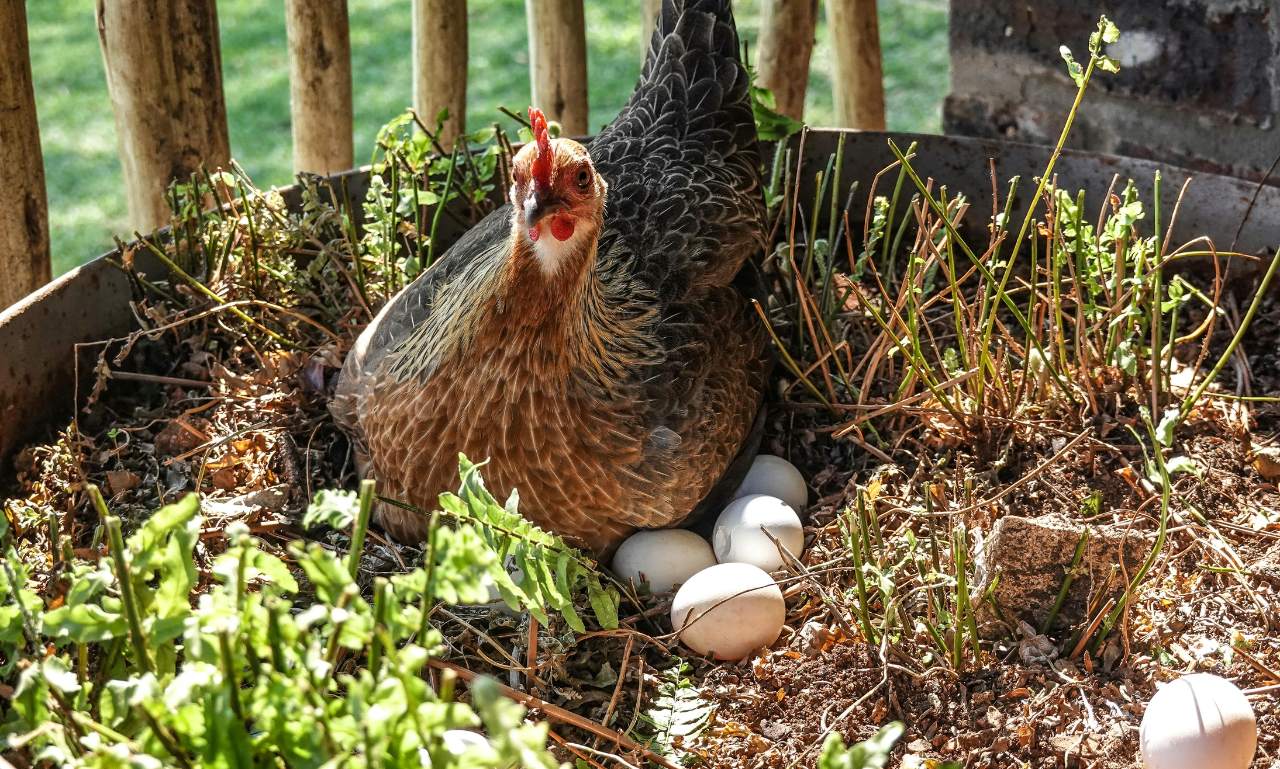Morning comes. The sun rises. You walk outside. Warm eggs wait in the nest.
Raising chickens for eggs is not hard. It is real. It is good. You need space. You need time. You need to care. The reward is golden yolks, cracked open in your kitchen.
Start with research. Know the rules. Build a strong coop. Pick calm hens—Rhode Island Reds, Leghorns, Australorps. Feed them well. Grains, greens, clean water. Collect eggs daily. Keep them cool.
This is not just about food. It is about dirt under nails. It is about watching hens scratch, preen, cluck. It is about mornings with a basket, stepping over dew-wet grass.
Some do it for sustainability. Some for the quiet joy. All do it for eggs that taste like sunlight.
Here, we show you how. Coop plans. Breed tips. Feed charts. Care routines. From first chick to first omelet. No fluff. No fuss. Just clear steps.
Ready? Let’s begin.
Growing Chickens for Eggs: What You Need to Start Your Backyard Flock
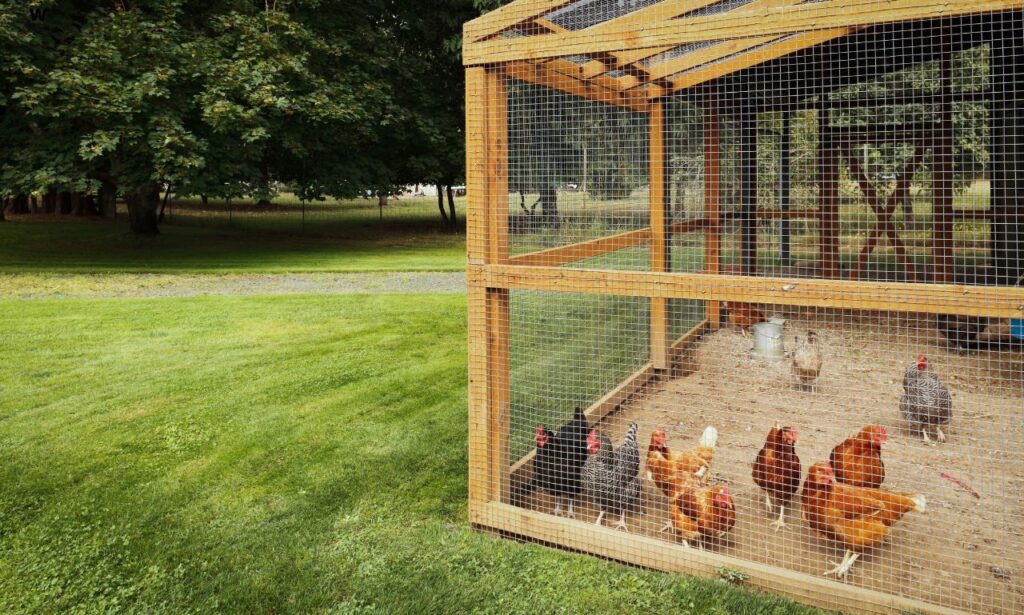
Morning light. A rooster crows. Hens stir. You walk to the coop. Warm eggs sit in straw-lined nests.
This is chicken farming for eggs. Simple. Honest. Good.
But first, you need things. Solid things. Practical things. Things that keep hens safe, fed, and laying. Below, we break it down. No jargon. No waste. Just what works.
1. Space and Housing: Build a Fortress, Not Just a Coop
Chickens need room. Tight spaces stress them. Stressed hens stop laying.
Coop Size:
Each bird needs four square feet inside. Ten square feet outside. More is better. Crowded hens fight. They peck. They waste feed. They get sick.
Build the coop strong. Predators come—raccoons, foxes, rats. Use hardware cloth, not chicken wire. Bury it a foot deep around the perimeter. Add locks. Heavy ones.
Ventilation:
Air must move. Stale air breeds disease. Cut high windows. Cover them with hardware cloth. No drafts at roost level. Cold drafts chill sleeping hens.
Nest Boxes:
One box per four hens. Wooden crates work. Plastic tubs work. Fill them with straw or shavings. Place them in a dark corner. Hens like privacy when laying.
Roosts:
Bars should be two inches wide. Rough wood grips claws. Set them two feet off the ground. Allow eight inches per bird. Higher bars dominate the pecking order.
Bedding:
Use pine shavings. Straw works. Avoid cedar—it’s toxic. Clean it weekly. Wet bedding stinks. It harbors mites.
A good coop is dry. Draft-free. Easy to clean. That’s the goal.
2. Basic Equipment: Tools for Health and Efficiency
You need gear. Durable gear. Simple gear.
Feeders and Waterers:
One feeder per six hens. Hang it chest-high. Spilled feed attracts rats. Use galvanized metal—plastic cracks.
Waterers must stay clean. Refill daily. In winter, use heated bases to prevent ice.
Feed:
Buy “layer pellets.” They have 16% protein. Calcium too. No cheap scratch grains—they’re filler.
Supplement with grit. Hens have no teeth. Grit grinds food in their crops. Offer oyster shell in a separate dish. Strong shells need calcium.
Heat Lamps (If Needed):
Most hens handle cold. Chicks need warmth. Use a red bulb. Hang it 18 inches above the brooder.
First-Aid Kit:
Keep these:
-
Poultry wound spray.
-
Electrolytes for stressed hens.
-
Diatomaceous earth (food-grade) for mites.
-
Vet wrap for broken toes.
Storage:
Store feed in metal bins. Plastic cracks. Rats chew through.
Local Laws:
Check rules. Some towns limit flock size. Others ban roosters. Fines waste time.
3. The Egg-Coop: Design for Daily Harvests
A coop isn’t just shelter. It’s an egg factory.
Nest Box Tricks:
Line boxes with fake eggs. Golf balls work. Hens seek nests that “have eggs.”
Collect eggs midday. Hens lay early. Wait until they’ve finished.
Roost vs. Nest:
Roosts must be higher than nests. Hens won’t sleep where they lay.
Lighting:
Fourteen hours of light triggers laying. Add a bulb in winter. Use a timer. Don’t overdo it—hens need rest.
Cleanliness:
Scrub waterers weekly. Bleach kills algae. Rinse well.
Replace nest straw often. Dirty nests tempt hens to eat eggs.
4. The Run: Safe Grounds for Scratching and Sun
Chickens are happiest outside. But the run must be a fortress.
Fencing:
Bury wire 12 inches down. Bend it outward to block diggers.
Cover the top. Hawks dive. Owls strike at dusk. Use netting or more hardware cloth.
Dust Baths:
Mix dirt, sand, and ash in a kiddie pool. Hens roll here. It smothers lice.
Shade and Shelter:
Plant sunflowers. They give shade. They drop seeds.
Use tarps in summer. Use windbreaks in winter.
Enrichment:
Hang cabbage heads. Pecking keeps hens busy.
Scatter scratch grains in leaves. They’ll hunt.
Feed Stations:
Multiple feeders cut bullying. Dominant hens guard food.
The Heart of It
This is not a hobby for the lazy. It’s for those who want real food. Real work. Real sunrises.
You’ll shovel manure. You’ll fix fences. You’ll chase off raccoons. But you’ll also crack eggs with yolks like orange moons. You’ll watch hens sprint for mealworms. You’ll learn the rhythm of seasons.
Start small. Start right. Grow from there.
The tools are simple. The rewards are not.
Now build the coop. Fill the feeder. Welcome the hens.
The eggs will come.
My Top 8 Chicken Breeds for Beginners: Reliable Layers, Calm Hearts
Hens are not all the same. Some lay more. Some fight cold. Some sit in your lap. Choose wrong, and you get trouble. Choose right, and eggs fill your kitchen.
Here are eight breeds that work. Simple. Steady. Good for beginners.
1. Barred Rock
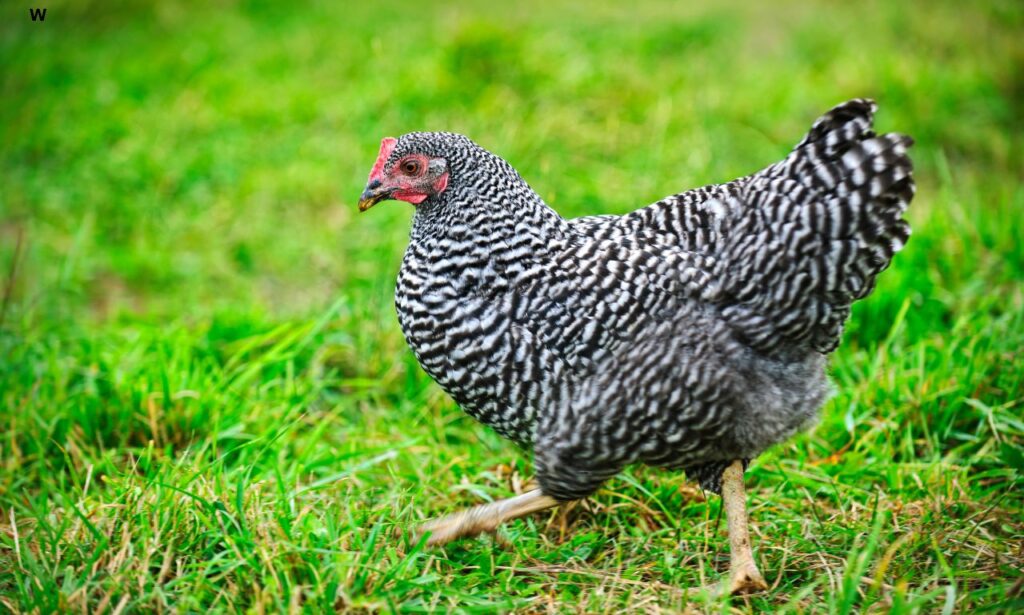
Why Choose Them?
Tough birds. Friendly birds. They survive heat. They survive snow. Feathers are black and white, like stripes. Good for eggs. Good for meat. A heritage breed—proven by time.
Egg Production:
200-280 brown eggs a year. Steady. Reliable.
Temperament:
Calm. Curious. They follow you, clucking softly. Kids can hold them.
Bonus:
Low-maintenance. They forage well. They avoid drama.
2. Brahma
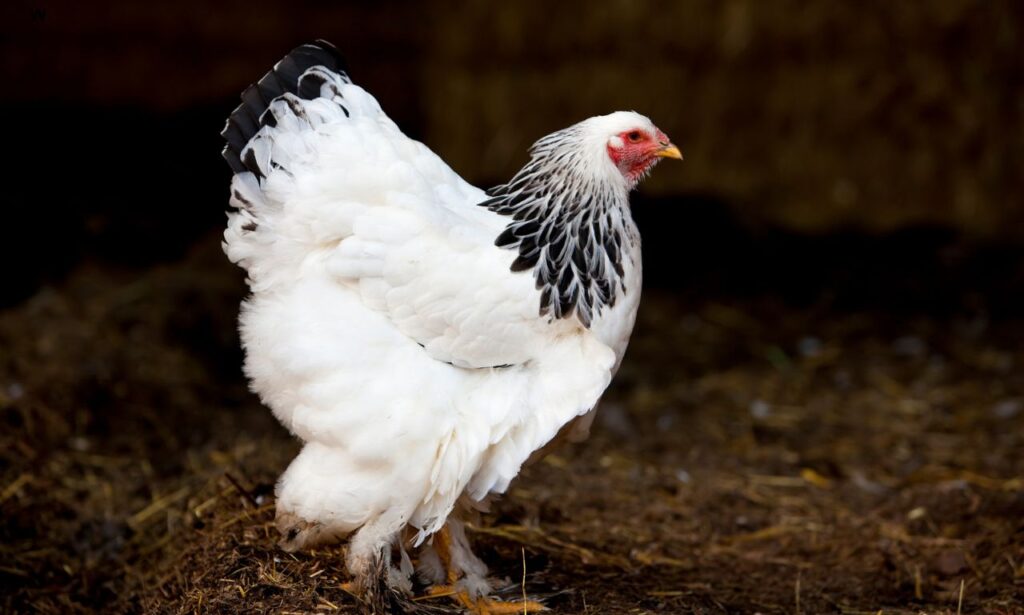
Why Choose Them?
Gentle giants. Feathered feet. Built for cold. They look regal—like they own the yard.
Egg Production:
150-200 brown eggs yearly. Smaller numbers, but they lay all winter.
Temperament:
Quiet. Patient. They tolerate clumsy hands. Perfect for first-time owners.
Bonus:
Roosters are polite. Less crowing. Less fuss.
3. Orpington
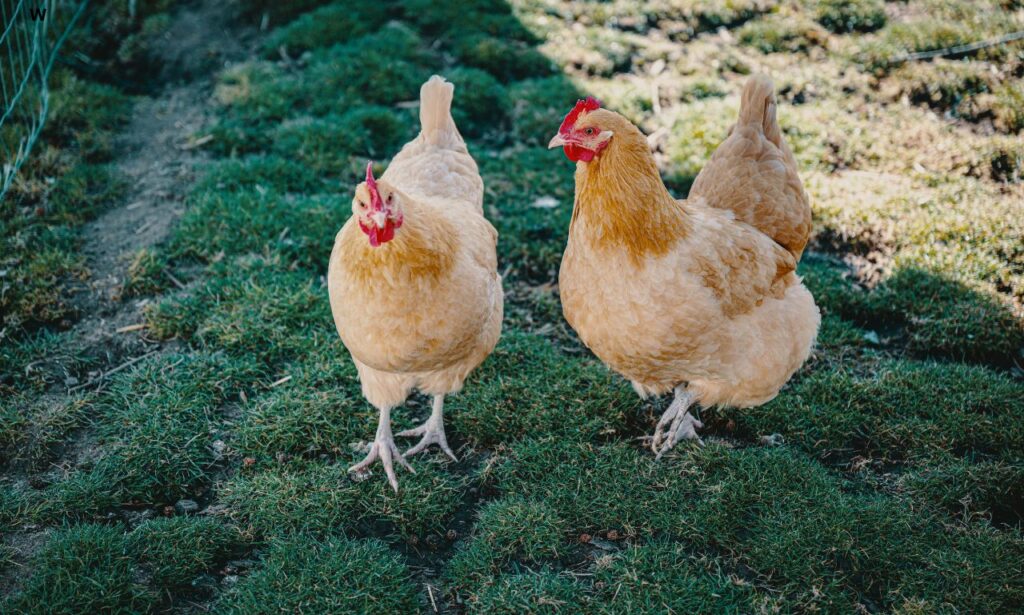
Why Choose Them?
Fluffy golden clouds. Dual-purpose—eggs and meat. They love attention.
Egg Production:
200-280 large brown eggs. Consistent, even in small coops.
Temperament:
Sweet. Affectionate. They sit in your lap. They purr when petted.
Bonus:
Thick feathers insulate against frost. Winter eggs taste sweeter.
4. Rhode Island Red
Why Choose Them?
Workhorses. No frills. All eggs. They thrive in chaos.
Egg Production:
250-300 brown eggs a year. Machines.
Temperament:
Bold but friendly. They boss the flock but respect you.
Bonus:
Disease-resistant. Forage like pros. Survive neglect.
5. Australorp
Why Choose Them?
Australian stars. Record holders—one hen laid 364 eggs in a year.
Egg Production:
250-300 cream or brown eggs. Relentless.
Temperament:
Calm. Adaptable. They ignore noise. They ignore chaos.
Bonus:
Shimmering black feathers. They glow green in sunlight.
6. Leghorn
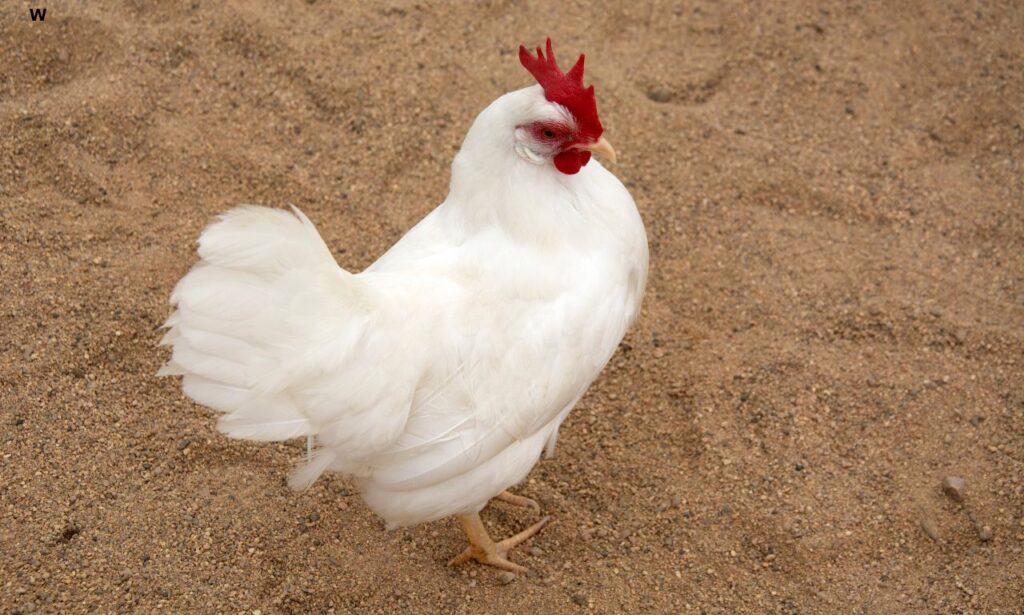
Why Choose Them?
Egg missiles. White eggs. Lots of them. Heat-tolerant.
Egg Production:
280-320 eggs yearly. Small bodies, big output.
Temperament:
Skittish but smart. They avoid cuddles but respect routine.
Bonus:
Feed-efficient. They eat less, lay more. Profit.
7. Sussex
Why Choose Them?
English classics. Curious explorers. They dig gardens. They eat pests.
Egg Production:
200-250 cream or brown eggs. Steady for years.
Temperament:
Bold but gentle. They greet you at the gate.
Bonus:
Speckled feathers hide dirt. Perfect for messy runs.
8. Wyandotte
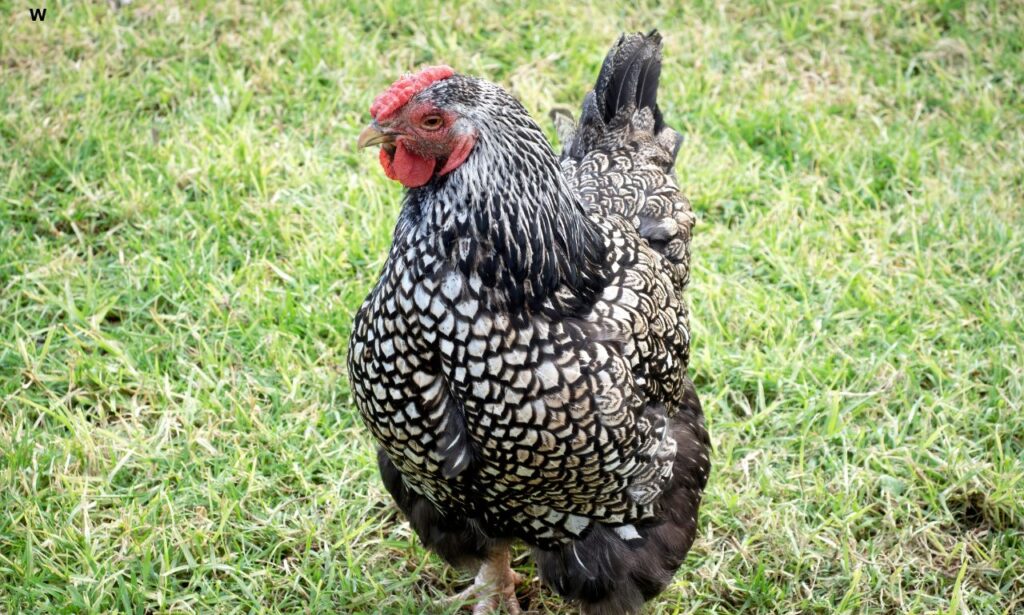
Why Choose Them?
Jewel-toned. Cold-hardy. Feathers gleam like silver lace.
Egg Production:
200-240 brown eggs. Winter layers.
Temperament:
Independent but calm. They don’t need babysitting.
Bonus:
Heritage breed. They live long. They give more.
The Right Choice
Pick breeds that match your land. Your weather. Your hands.
Want eggs? Lean toward Leghorns, Australorps, Rhode Island Reds.
Want pets? Orpingtons, Brahmas, Sussex.
Want both? Barred Rocks, Wyandottes.
Start small. Buy three hens. Learn their ways. Then grow.
Good breeds make good flocks. Good flocks make good mornings—baskets heavy, yolks bright, chores worth doing.
Now choose. The coop waits. The eggs come.
Setting Up the Perfect Chicken Coop: A Step-by-Step Plan
Morning sun. Fresh sawdust. A coop stands ready. Hens cluck, scratch, settle.
A good coop is simple. Strong. Safe. Follow these steps. Build it right.
Step 1: Calculate Space
Chickens hate crowds. Crowds breed disease.
-
Indoor Space: 4 square feet per bird.
Example: 6 hens need 24 sq ft (6×4 ft). -
Outdoor Run: 10 square feet per bird.
Example: 6 hens need 60 sq ft (10×6 ft).
Bigger is better. Tight spaces stress hens. Stressed hens stop laying.
Step 2: Pick a Location
Sunlight matters. Drainage matters.
-
Sun: Face windows south. Winter sun warms the coop.
-
Shade: Trees or tarps shield summer heat.
-
Drainage: Elevate the coop. Use cinder blocks. Mud kills chickens.
Step 3: Build Walls and Floor
Use solid materials. Predators chew weak spots.
-
Walls: Plywood or reclaimed wood. Insulate for cold climates.
-
Floor: Line with hardware cloth. Cover with wood. Stops digging pests.
-
Roof: Metal or asphalt shingles. Slope it. Rain slides off.
Step 4: Cut Ventilation
Airflow stops disease. Drafts kill.
-
Vents: Cut 6-inch gaps near the roof. Cover with hardware cloth.
-
Windows: Install two. High up. Let hot air escape.
-
No Drafts at Roosts: Hens sleep here. Keep sleeping areas still.
Step 5: Add Nesting Boxes
Hens need privacy.
-
Number: One box per 4 hens.
-
Size: 12x12x12 inches. Wooden crates. Plastic bins.
-
Placement: Dark corner. Elevate 18 inches off the ground.
-
Bedding: Straw or pine shavings. Add fake eggs (golf balls). Hens copy.
Step 6: Install Roosting Bars
Chickens sleep high.
-
Bars: 2-inch wide boards. Sand edges. Rough wood grips feet.
-
Height: 2-3 feet off the ground.
-
Space: 8 inches per hen. Stagger bars if needed.
-
Location: Higher than nesting boxes. Hens won’t poop where they lay.
Step 7: Predator-Proof Everything
Raccoons open latches. Foxes dig. Hawks dive.
-
Hardware Cloth: Cover windows, vents, gaps. Chicken wire fails.
-
Locks: Use carabiners or padlocks. Raccoons outsmart hooks.
-
Bury Wire: Bend hardware cloth 12 inches outward at the run’s base. Stops diggers.
-
Roof the Run: Use wire mesh or netting.
Step 8: Set Up Feed and Water
Hens eat. Hens drink. Keep it clean.
-
Feeders: Hang galvanized metal troughs. Chest height. Stops scratching.
-
Waterers: Use nipple systems or gravity cans. Refill daily.
-
Placement: Under cover. Rain ruins feed. Sun grows algae.
Step 9: Add Bedding and Maintenance
Clean coops mean healthy hens.
-
Bedding: 4-6 inches of pine shavings. Avoid cedar—toxic.
-
Clean Weekly: Scoop droppings. Replace wet spots.
-
Deep Clean Monthly: Remove all bedding. Scrub with vinegar. Dry fully.
Step 10: Test Before Hens Arrive
Fix flaws now. Panic later costs eggs.
-
Lock Latches: Try to pry them open. If you can, raccoons can.
-
Check Drafts: Light a candle. Hold it near roosts. Flames flicker? Seal gaps.
-
Food Test: Fill feeders. Watch for spills. Adjust height.
The Heart of It
A coop is not a barn. It’s a fortress. A nursery. A shelter.
Build it once. Build it right. Hens don’t need luxury. They need dry wood. Tight locks. Fresh air.
You’ll sweat. You’ll curse splinters. But when hens strut inside, flap onto roosts, settle into straw—you’ll know.
It’s worth it.
Now build.
What Chickens Need Every Day: A Simple Routine for Happy Hens
Sunrise. A rooster crows. Hens stretch, flap, hop down from roosts. Their day begins. Yours does too.
Chickens ask little. Give them this daily. They thrive.
1. Fresh Water: Clear, Cool, Always
Water is life. Hens drink a pint a day. More in heat. More when laying.
What to do:
-
Fill clean buckets at dawn. Scrub algae weekly. Use vinegar, not bleach.
-
Place waterers in shade. Sun heats water. Hens hate warm sips.
-
Winter hack: Float a tennis ball. It stops ice from sealing the surface.
-
Add apple cider vinegar (1 tbsp per gallon). Once a week. It aids digestion.
Why it matters:
Dehydrated hens stop laying. Combs pale. Eggs shrink.
Signs of trouble:
Hens pant. Wings droop. They crowd the waterer. Fix it fast.
2. Good Food: Fuel for Eggs and Life
Hens eat to work. Laying eggs is work.
Layer feed:
-
Buy pellets, not crumbles. Less waste.
-
16% protein. Check the label.
-
Store in metal bins. Rats gnaw plastic.
Treats:
-
Scatter scratch grains at dusk. It lures hens back to the coop.
-
Toss vegetable scraps. They love kale, squash, cucumber.
-
Avoid avocado skins. Avoid dried beans. Poison.
Supplements:
-
Keep grit in a dish. Hens need it to grind food.
-
Offer oyster shell separate. Strong shells need calcium.
Why it matters:
Poor feed means thin eggs. Weak hens. Slow molts.
Signs of trouble:
Eggs with soft shells. Hens eating feathers. Fix the feed.
3. Clean Bedding: Dry Feet, Healthy Lungs
Damp coops kill.
What to do:
-
Shovel manure daily. Use a cat litter scoop. Quick. Easy.
-
Fluff pine shavings each morning. Stir them like salad.
-
Replace wet patches. Mold spores attack lungs.
Deep litter method (optional):
-
Add fresh shavings weekly. Let layers compost.
-
Turns to mulch in months. Smells sweet.
Why it matters:
Dirty bedding breeds mites. Hens scratch bald spots. Eggs taste muddy.
Signs of trouble:
Ammonia stings your eyes. Hens cough. Clean now.
4. Outdoor Time: Earth, Sky, Freedom
Hens need to scratch. To sunbathe. To hunt bugs.
What to do:
-
Open the coop at first light. Let them run.
-
No run? Free-range supervised. Hawks strike fast.
-
Plant clover in the run. They eat it. It regrows.
Enrichment:
-
Hang a cabbage on a string. Pecking keeps busy.
-
Bury mealworms in dirt. They dig like kids in sandboxes.
Why it matters:
Cooped hens grow bored. They peck each other. Eggs slow.
Signs of trouble:
Feathers on the ground. Blood on combs. Expand their world.
5. Social Time: Eyes, Hands, Heart
Hens know your voice. Your walk. Your hands.
What to do:
-
Walk the coop each dusk. Count heads. Check feet.
-
Hand-feed treats. Sit with them. They perch on your boot.
-
Talk. They cluck back. Nonsense words work.
Health checks:
-
Eyes bright? Nostrils clean? Vent feathers clean?
-
Feel their crops at night. Squishy means digestion. Hard means trouble.
Why it matters:
Lonely hens stress. Sick hens hide it. You are their keeper.
Signs of trouble:
A hen sits alone. Fluffed feathers. Act fast.
6. Collecting Eggs: The Daily Treasure Hunt
Eggs wait. They don’t wait long.
What to do:
-
Gather eggs mid-morning. Hens lay early.
-
Check nest boxes. Check corners. Check under bushes.
-
Wipe dirt with dry cloth. Never wash—bloom protects.
Storage:
-
Keep eggs in cartons. Pointy end down.
-
They last a month unwashed. Fridge stretches it.
Why it matters:
Left eggs tempt hens to brood. Or peck them. Waste.
Signs of trouble:
Broken eggs in nests. Hens eating yolks. Collect faster.
The Rhythm of It
This is not a chore list. It’s a ritual. A pact.
You rise. You water. You feed. You watch. They give eggs. They give laughter. They give purpose.
Some days, you’ll rush. Spill grain. Forget eggs. Hens forgive.
Other days, you’ll linger. Watch dust baths. Study pecking orders. Learn their names.
This is the exchange. Simple. Ancient. Good.
Do the work. The eggs come. The flock thrives. You sleep well.
Raising Baby Chicks: A No-Nonsense Guide to Feathered Beginnings
Tiny beaks. Fluff like dandelions. Weak peeps. Baby chicks are fragile. Handle them right. They grow fast.
Here’s how.
1. The Brooder: Build a Nursery, Not a Box
Chicks need warmth. Safety. Space.
Size:
-
For six chicks: 2×2 feet. Add space as they grow.
-
Use a plastic tub. Cardboard box. Stock tank.
Location:
-
Garage. Barn. Shed. Not your kitchen. Dust invades.
-
Keep it draft-free. Away from dogs. Away from curious toddlers.
Bedding:
-
Pine shavings. Not cedar—fumes kill.
-
Avoid newspaper. Slippery legs splay.
Cleanliness:
-
Scoop poop daily. Replace bedding weekly. Dampness chills.
2. Heat: 95°F and Steady
Cold chicks die. Hot chicks die. Balance matters.
Week 1: 95°F at brooder floor.
Week 2: 90°F.
Lower 5°F weekly until feathers grow (6 weeks).
Heat Sources:
-
Brooder plate: Safer. Mimics a hen. Chicks crawl under.
-
Heat lamp: Red bulb. Hang 18 inches up. Secure with chains. No fires.
Signs They’re Cold:
-
Huddle in a pile. Peep loudly.
Signs They’re Hot: -
Pant. Spread wings. Avoid heat source.
Adjust the lamp. Raise the plate. Watch. Act.
3. Feed and Water: Fuel for Fluff
Chicks eat nonstop.
Feeder:
-
Shallow tray. Prevent drowning.
-
Fill with chick starter feed (20% protein). No adult feed.
Waterer:
-
Small base. Add marbles. Stops drowning.
-
Change water twice daily. Poop floats.
Supplements:
-
Electrolytes in water for stressed chicks.
-
Grit if feeding treats (crushed eggshell works).
Treats (After Week 1):
-
Scatter oatmeal. Mash hard-boiled eggs. Avoid lettuce—no value.
4. Health Checks: Eyes, Beaks, Bums
Inspect daily. Sickness spreads fast.
Eyes: Bright. No crust.
Vents: Clean. No pasted poop.
Legs: Steady. No splaying.
Isolate weak chicks. Warmth. Sugar water.
5. The First Week: Critical Moves
Day 1:
-
Dip beaks in water. Teach them to drink.
-
Keep lights dim. Stress kills.
Day 3:
-
Add chick grit if feeding scraps.
-
Check for pasty butt—wipe with warm cloth.
Day 7:
-
Lower heat to 90°F.
-
Introduce perch—low stick. Train wings.
6. Feathers Mean Freedom
At 6 weeks, feathers replace fluff.
Transition:
-
Move to coop gradually. Start with daytime visits.
-
Mix chick feed with layer feed over 7 days.
The Heart of It
Raising chicks is not cute. It’s commitment.
You’ll wake at 3 a.m. Check heat lamps. You’ll fret over silent chicks. You’ll scrub waterers.
But then—you’ll see wings stretch. Hear peeps turn to clucks. Watch curiosity spark.
And one morning, you’ll find an egg. Small. Warm. A first gift.
That’s the reward.
Now build the brooder. Fill the feeder. Welcome life
Egg Production and Management: Keep the Baskets Full
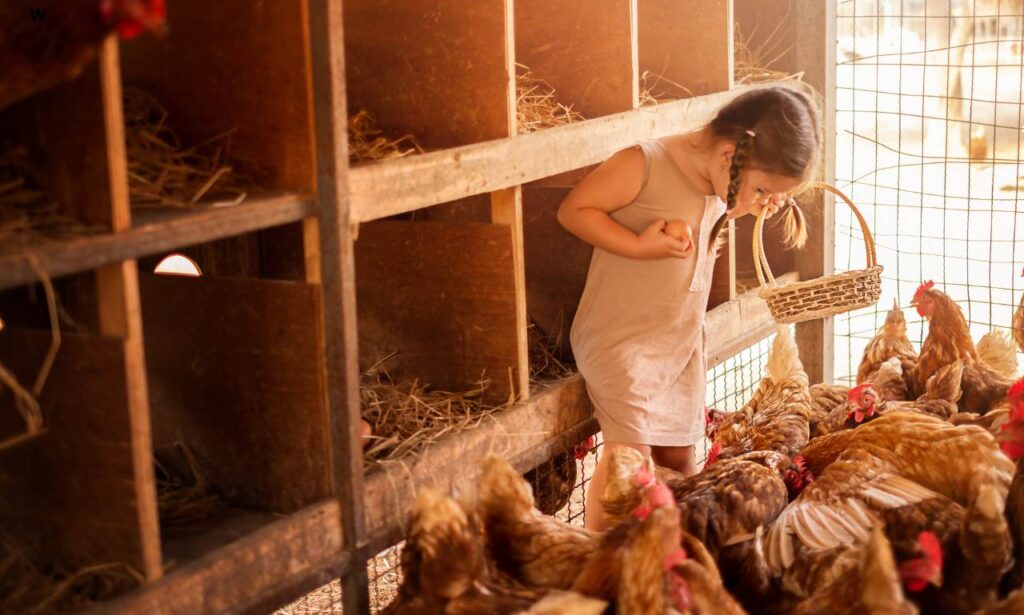
Eggs come. Hens give. You take. But manage wrong, and the flow stops.
Here’s how to keep it steady.
1. The Rhythm of Laying: Light, Seasons, Age
Hens are not machines. They follow sun, heat, time.
First Eggs:
-
Pullets start at 5-6 months. Small eggs. Irregular.
-
Peak laying hits at 1 year. 5-6 eggs weekly. Golden age.
Light Rules All:
-
Hens need 14-16 hours of light to lay. Winter sun fails.
-
Fix it: Hang a bulb. 40 watts. Use a timer. Dawn to dusk.
-
Warning: Too much light stresses. 16 hours max.
Seasons Shift:
-
Spring = eggs flood. Hormones surge.
-
Summer = steady. Heat waves cut appetite. Shade saves.
-
Fall = slow. Molting starts. Feathers drop. Eggs stop.
-
Winter = scarce. Unless you cheat with light.
Age Matters:
-
Year 1: Peak.
-
Year 2: 80% of first year.
-
Year 3: 60%. Still good.
-
After 4: Retirement. Pets, not producers.
2. The Harvest: Collect, Clean, Keep
Eggs demand care. Neglect ruins them.
When to Collect:
-
Morning. Most hens lay by noon.
-
Check twice. Shy layers use hidden spots.
Nest Box Hacks:
-
One box per 4 hens. Crowding cracks eggs.
-
Fake eggs lure hens. Golf balls work.
-
Dark corners = happy layers. Hang curtains for privacy.
The Bloom:
-
Fresh eggs wear a coat. Invisible. Blocks bacteria.
-
Don’t wash unless filthy. Water strips the bloom.
-
If washing: Use warm water. Scrub gently. Dry fast. Refrigerate.
Dirty Eggs:
-
Prevent with clean bedding. Replace straw weekly.
-
Muddy egg? Sandpaper scuffs. No water.
Storage:
-
Counter: 2 weeks. Cool room.
-
Fridge: 3 months. Pointy end down.
-
Never fridge to counter and back. Sweat invites bacteria.
3. Troubleshooting: Fixes for Common Problems
No Eggs? Check:
-
Light: Too dim? Add a bulb.
-
Food: Low protein? Switch to 16% layer pellets.
-
Stress: Predators? Dogs? Loud kids? Hens hide eggs.
-
Age: Old hens quit. Replace the flock.
Broken Eggs:
-
Hens taste yolk. They crave it. Cannibalism starts.
-
Fix: Collect faster. Remove broken shells. Feed crushed oyster shell.
Soft Shells:
-
Calcium shortage. Offer oyster shell free-choice.
-
Sick hens? Check for wheezing. Worms steal nutrients.
Broody Hens:
-
Cluck stubbornly. Sit on empty nests.
-
Break it: Move her to a wire cage. No bedding. 3 days.
20 FAQs on Raising Chickens for Eggs: Straight Answers
1. Can chickens lay eggs without a rooster?
Yes. Hens lay eggs daily without a rooster. Roosters fertilize eggs for hatching. No rooster? Eggs stay edible. No difference in taste or nutrition.
2. Brown vs. white eggs: Any nutritional difference?
None. Shell color depends on breed. Brown hens lay brown eggs. White hens lay white. Feed determines yolk color, not shell.
3. How to stop predators from killing my flock?
Build a fortress. Use hardware cloth, not chicken wire. Bury fencing 12 inches deep. Lock coops at dusk. Motion lights scare night hunters.
4. My hen stopped laying. Why?
Check light, stress, age. Molting? Short days? Poor feed? Add calcium. Hens slow at 2-3 years. Sick hens need a vet.
5. How to manage chicken manure?
Scoop daily. Compost it. Mix with straw, turn piles. Use in gardens after 6 months. Deep litter method cuts cleaning—add shavings weekly.
6. How long do hens lay eggs?
Peak: 1-2 years. Decline after. Some lay 5+ years, fewer eggs. Replace flocks every 3-4 years for steady supply.
7. How many chickens should I start with?
3-6 hens. Enough eggs for a family. Manageable for beginners. More birds mean more space, feed, work.
8. What to feed laying hens?
Layer pellets (16% protein). Oyster shell for calcium. Treats: veggies, mealworms. No avocado, chocolate, salty scraps.
9. Can chickens free-range safely?
Yes, if supervised. Hawks strike by day. Foxes at dusk. Use covered runs. Let them roam evenings—fewer predators.
10. Winter care tips?
Insulate coops. Block drafts. Use heated waterers. Add bedding. Hens handle cold if dry. Avoid heat lamps—fire risk.
11. What causes soft eggshells?
Low calcium. Offer oyster shell free-choice. Check for worms. Stressed hens? Fix routines.
12. Do chickens need vaccinations?
Depends. Backyard flocks often skip. Hatcheries vaccinate chicks. Ask when buying. Quarantine new birds.
13. How to stop egg-eating hens?
Collect eggs fast. Remove broken shells. Use rollaway nest boxes. Darken nesting areas.
14. Why are my hens losing feathers?
Molting. Natural yearly shed. Boost protein. Add mealworms. Feathers regrow in 6-8 weeks.
15. How much water do chickens need?
1 pint daily per hen. Double in heat. Clean waterers prevent disease. Refill twice in summer.
16. Can I mix chicken breeds?
Yes. Match sizes. Avoid bullying. Calm breeds (Orpingtons) with flighty ones (Leghorns) may clash.
17. What’s brooding? How to stop it?
Broody hens sit on eggs. Remove her. Use a wire cage for 3 days. Cool her belly. Breeds like Silkies brood often.
18. Are chickens noisy?
Hens cluck softly. Roosters crow. Check local laws—many ban roosters. Urban flocks stay quiet.
19. How to introduce new hens?
Quarantine for 2 weeks. Use a separate coop. Introduce slowly. Nighttime merges reduce fights. Watch the pecking order.
20. Cost of raising chickens?
You can expect to pay between $200 – $400 raising a small flock of chickens in a coop.
Final Note
Chickens ask little. Give shelter, food, safety. They give eggs, laughter, lessons in sunup to sundown labor. Start small. Learn. Expand.
Now build the coop. Fill the feeder. The hens wait.

